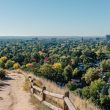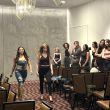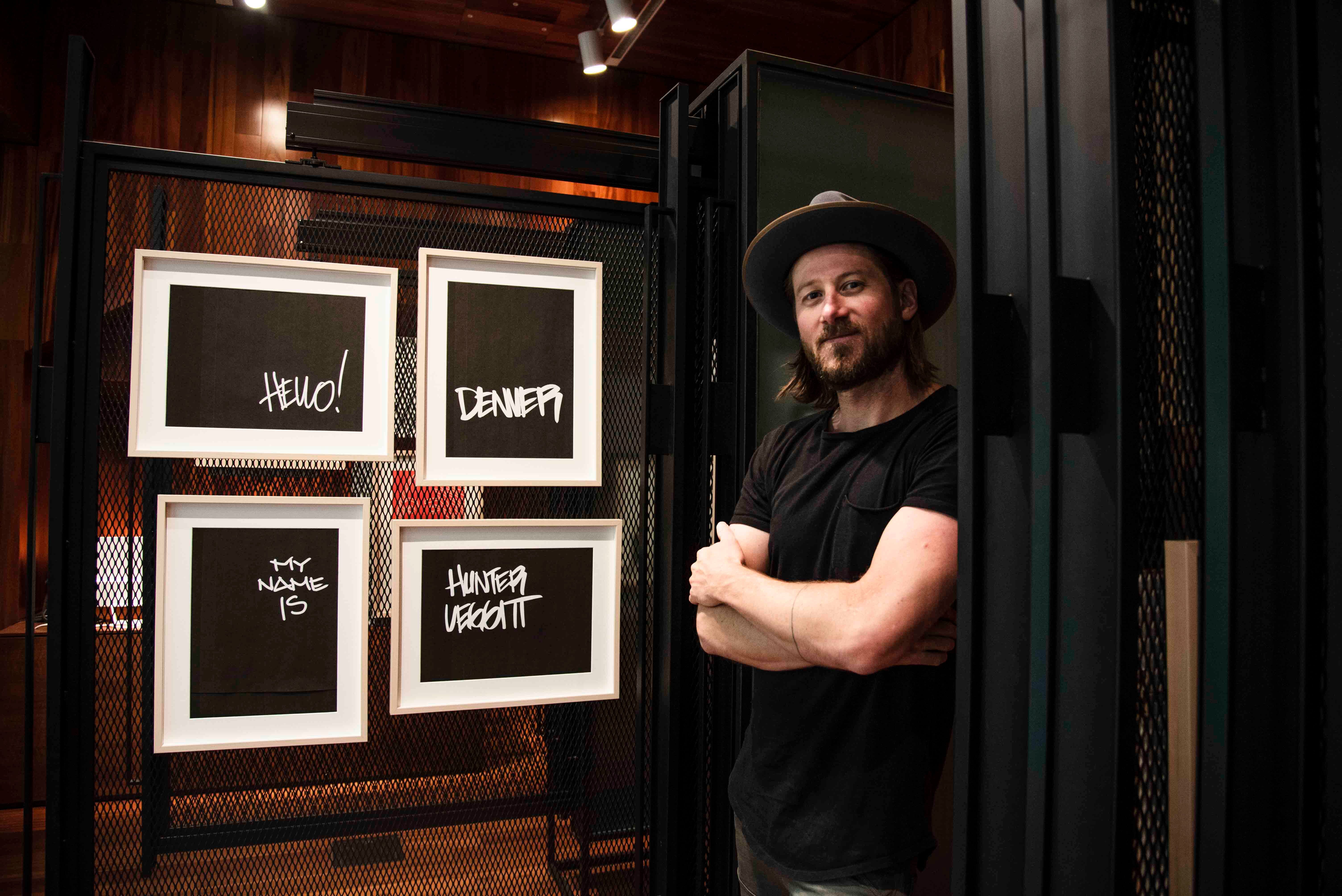Welcome to our series, Hello Denver, My Name is… where we profile different people in Denver you probably don’t know, but should. Get ready to meet painters, dancers, comedians, musicians, designers and just generally fascinating people that help make Denver awesome.
You may not know Hunter Leggitt by face, but you have certainly seen his designs. From designer homes to stage builds at Coachella and last year’s Far Out Factory to even the Museum of Contemporary Art’s Octopus Initiative design, Leggitt is a multi-disciplined architectural visionary who facilitates the projects of dreams. With an eye on intentionality, regardless of the project, Leggitt has a keen sense of imbuing his work with a distinct sense of purpose. A Colorado native, Leggitt spent much of his professional career in Los Angeles, honing his skills, and finding a home in a rather unlikely industry. Recently returning to Denver, Leggitt sees Denver as a place full of ideas ready to put design on the forefront.
303 Magazine: When did you move back to Denver?
Hunter Leggitt: I left in 2003, and came back three years ago. I grew up in Denver and went to high school at George Washington. After that, the University of Colorado Boulder (CU Boulder). I split town and landed in Los Angeles a week after graduating — it was just the place for me. I needed to be there — it’s where the best design was. So I spent about 15 years out there then came back. It’s been a wild ride.
303: What brought you back?
HL: A couple of factors. One is the lifestyle. Denver and the mountains provide an ability to live, work and play hard, as well as a convenient way to detach from it all. That’s very attractive to me now. In Los Angeles, you’re able to get a lot of stuff done, but in doing so, you’re often running on all cylinders, all of the time. I had also been keeping my eyes on Denver, aware of the growing market for high-end design and curation. Being here now, I’m experiencing such a positive and productive creative momentum going on, and it’s exciting to be contributing to it.
303: Can you describe what Hunter Leggitt Studio does, and how you got there?
HL: I think the best way for me to explain it is to first share a little bit of my background. I went to the Environmental Design program at CU Boulder and graduated in the early ‘00s. Prior to that, I was a fine artist. I transitioned into architecture as it was more of a tangible form of creative expression— something that could be built, permanent, less esoteric and subjective. That ultimately led me to Los Angeles to pursue high-end architecture and design. For the first five years in the profession, I worked in commercial architecture, designing large mixed-use projects in Los Angeles, Vegas and overseas. I reached a point where I realized that architecture alone wasn’t ultimately fulfilling my passions. I needed to get more into the science of building. That led me to San Diego to work under my mentor, Sebastian Mariscal. He ran a small design/build/development studio that was very renegade cowboy with about five of us doing almost everything. We were designing and building unbelievably cool, high-end architecture that not many people were doing down there at the time. I spent a couple of years as a sponge, working and learning everything that I could. Then decided to take the next step and open my own design/build studio back up in Los Angeles — Hunter Leggitt Studio. I started out with several projects through referrals from my network but this was right at the start of the recession. So the phone wasn’t ringing, but a large creative industry that didn’t seem to be slowing down was calling my name. Enter, the entertainment industry. Now a little over 10 years in, I split my time and creative efforts between permanent architectural design and ephemeral production design.
303: Looking at your work with Coachella’s Do Lab and Pharrell’s stage among others, what inspires you to create these concepts?
HL: A lot of my work is done through large collaborations. My business is typical just me, but I scale up when needed. This keeps things simple and malleable, growing and shrinking with demand. The intention is so that I can take on projects and experiences of all scales and complexities, but also not drown trying to sustain a firm. Sometimes we’re a team of 50 or more people, all working together. The projects that I’ve done with the Do Lab and Coachella have been just that. When I first met the crew in Los Angeles, they had incredible projects already going and initially brought me in to collaborate on aspects of the design and build management. That grew into an ongoing relationship with larger and more creative collaborative projects. This relationship opened the doors to a completely different form of production and design-build, one which is ephemeral, large scale, highly intentional and impacting. And most importantly, exposed to the masses. That has been very inspiring for me, having spent many years only working with individual clients and families. The experiential and immersive design has really been influential to all of the other efforts that I currently do.
303: How do you approach creating these experiential designs in the entertainment sphere?
HL: Experiential design is creating something that moves your audience. In order to do that, you need to understand your audience and understand what is going to engage and impact them. If we’re talking about stage production, you need to understand the musician and their audience – then produce something that inspires. I always want the fans to smile. So the first step of any project is to make sure that we on the production end are having fun. Why do all of this if not? The next is to figure out how to engage our audience and let them experience something that’s not only unique and exciting but has some sort of message and intentionality behind it. What do they want? What does the artist want? What message do they want to portray to their fan base? Sometimes they don’t even know the answer to this and you just have to take a blind stab at it — sometimes it works and sometimes it doesn’t, but mostly, it works.
303: What’s your favorite project that you’ve personally worked on?
HL: It’s tough to pick out a favorite. Perhaps the most personally impacting project that I’ve done was a cabin that I designed and built from the ground up with students — “the 510 Cabin.” I assembled a team of seven student apprentices to move with me up to the mountains in central California for one year to design and build a custom cabin from start to finish. These were students fresh out of school that had little to no professional experience and certainly no building experience, but they had a lot of energy and intention to learn. Everything from start to finish was incredibly memorable.
303: In your opinion, what makes a good design?
HL: Good design comes from the thought and intentionality behind it. To me, good design is not only a product of a good designer but of everyone who’s involved in the process.
303: What is the best part of your job?
HL: The most enjoyable part of my job is the process. I really focus on the story that goes into all of these projects, not necessarily the final product. Whether it be the effort that goes into a large stage production that we pull of with 50 highly creative individuals, or the complex puzzle needed to successfully achieve an impactful real estate project, it’s the story behind these projects that I really enjoy.

303: If you had a dream project to work on, what would that look like?
HL: I’m in the process of working out the details and team to create a lifestyle-based real estate experience that not only looks at the design and how we can sustainably live, but also how communities can engage with each other and flourish in a healthy manner — something that can inspire for generations to come.
303: This last question is from the previous interviewee in this series, Sophie Birkin: “What is your favorite place in Denver?”
HL: That’s a tricky question having grown up here and having a large quiver of very dear places to me, both new and old. For what I’m doing now with strong intentionality focused on community building and high-level creative experience, I’d say the MCA Denver, hands down. With it’s exceptional artistic and educational programming paired with a highly inclusive culture surrounding it, this institution has been and still is one of the most influential groundbreakers in Denver. I find myself over there all of the time not only for the exhibitions but also to dance to great music on the rooftop, attend inspiring lectures and consistently meet interesting people with fascinating stories. I give it a lot of credit for being a beacon of light helping evolve this sports-driven, beer drinking, outdoor rec-centric city that I once knew into a growing hub of creative experience, dialogue, and community.
All photography by Madison McMullen, unless noted otherwise.
Editor’s Note: Interview has been edited and condensed for clarity.






